Mini-trampoline workouts offer seniors powerful benefits in just 10 minutes daily. Try these three routines: gentle marching in place while engaging your core, alternating heel-toe taps for balance training, and small controlled bounces with arm movements for full-body coordination. Always keep your knees slightly bent, maintain proper posture, and use a handlebar if needed. These exercises improve circulation, strengthen bones, and enhance stability by up to 35%. Discover how these bounce sessions transform your daily mobility and confidence.
The Science Behind 10-Minute Trampoline Sessions for Seniors
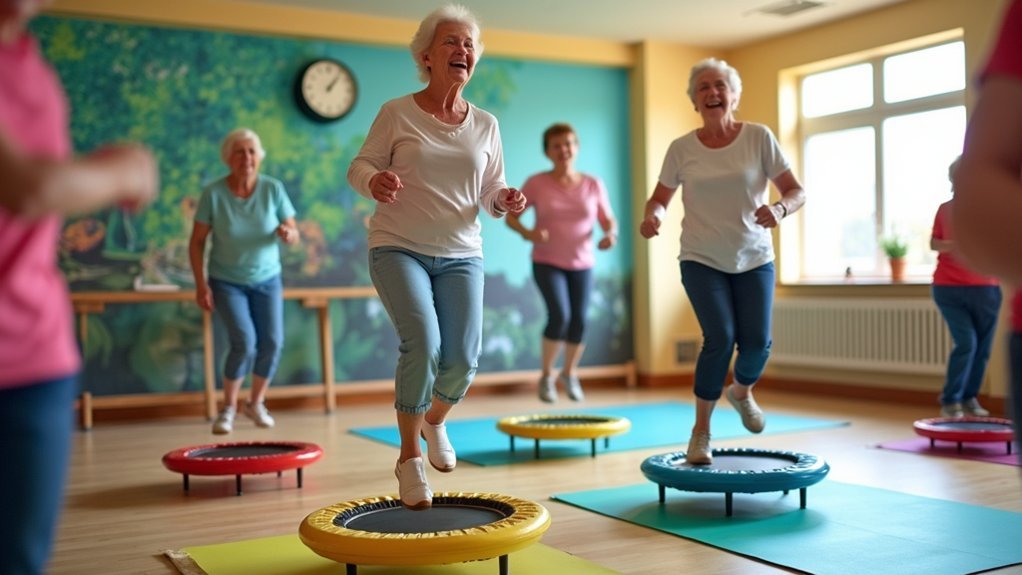
While many fitness trends come and go, mini-trampoline workouts have emerged as a scientifically-backed exercise option specifically beneficial for seniors. Just 10 minutes daily delivers remarkable results for your aging body.
These mini-trampolines provide an all-encompassing workout that enhances circulation and oxygen delivery throughout your system. You’ll experience approximately 35% improvement in balance while strengthening muscles and bones with minimal joint impact. Using indoor rebounders for exercise is significantly safer than traditional trampolines due to their stability and low-to-the-ground design.
What makes these workouts particularly effective is their multicomponent nature—simultaneously training strength, balance, and coordination. Your brain benefits too, with improved motor control and spatial orientation that translates to better reaction times in daily life.
For your mind, these sessions reduce stress and fear of falling while promoting neuroplasticity—keeping your brain adaptable as you age.
Gentle Bounce Routines for Balance and Bone Health
When it comes to maintaining independence and energy in your senior years, gentle bounce routines offer a perfect blend of balance enhancement and bone-strengthening benefits.
Just 10 minutes daily on a trampoline improves your postural stability through exercises that challenge coordination and spatial awareness.
A brief daily trampoline session creates balance mastery through mindful movements that retrain your body’s positioning system.
Simple movements like gentle jumping, marching, and toe taps can greatly reduce your fear of falling while improving gait performance. These low-impact activities stimulate bone remodeling and may increase bone density in areas vulnerable to fractures.
Before starting, consult your healthcare provider, especially if you have underlying conditions.
For maximum safety, use a sufficiently large trampoline surface with non-slip padding around it. Beginners should focus on establishing proper form with core engagement before adding hand weights to their routine. Consider combining your bounce routine with strength training and proper nutrition for extensive health benefits.
Making Mini-Trampoline Exercise Safe and Enjoyable
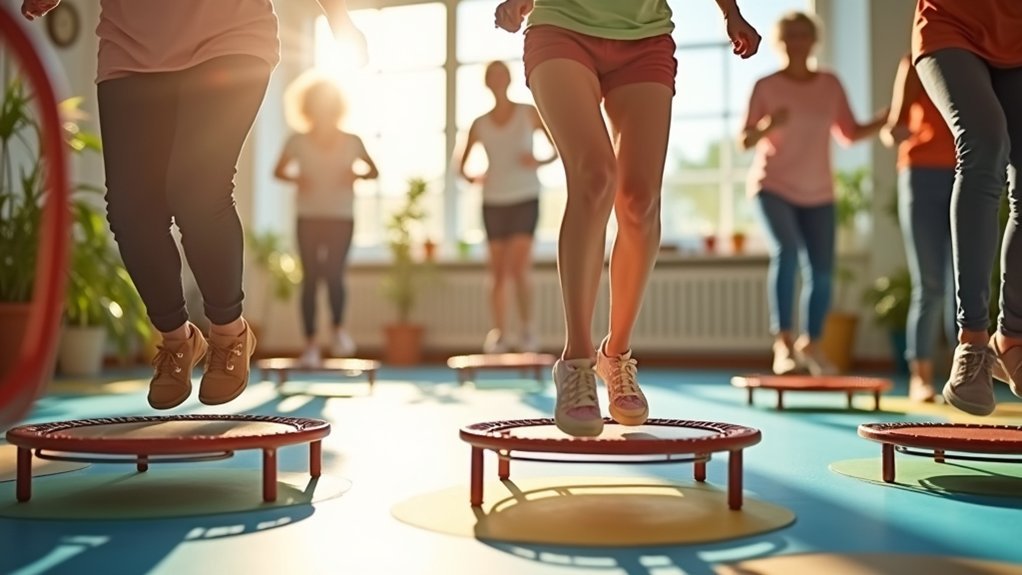
Safety comes first when incorporating mini-trampoline workouts into your senior fitness routine. Always place your rebounder on a level surface and consider models with handlebars for additional support.
Before each session, inspect the mat, springs, and frame for wear. Always spend a few minutes stretching your body to warm up before beginning your rebounding workout.
Keep your movements controlled—gentle bouncing, marching, and heel lifts are safer than high jumps. Maintain proper form by engaging your core and keeping knees slightly bent. Start with just 10 minutes daily and gradually increase as you build confidence.
Wear grip socks or appropriate footwear to prevent slipping, and guarantee you have 3-5 feet of clearance around your trampoline. Fix your gaze on a stationary object to enhance balance, and always stop if you experience pain or dizziness.
Remember to consult your physician before starting, especially if you have osteoporosis.
Frequently Asked Questions
Can I Use a Trampoline With a Pacemaker or Heart Condition?
You should consult your doctor before using a trampoline with a pacemaker or heart condition. They’ll evaluate your specific situation, as trampolining can strain your cardiovascular system and may not be safe for you.
How Do Medications Affect My Safety During Trampoline Exercises?
Medications can impact your exercise safety through dizziness, altered blood pressure, or increased injury risk. You’ll need to consult your doctor, monitor symptoms carefully, and adjust workout intensity based on your specific medication effects.
Will Trampoline Exercise Interfere With My Hearing Aid or Glasses?
Your hearing aids might be affected by sweat, so use moisture protection and secure them with clips. For glasses, wear sports straps to prevent slipping during bounces. Both can be safely managed with proper precautions.
Can I Do Trampoline Exercises After Hip or Knee Replacement?
Trampoline exercises aren’t recommended after hip or knee replacement. The impact can damage your implant. You’ll need your surgeon’s approval first. Consider low-impact alternatives like swimming or stationary biking instead.
How Does Trampoline Exercise Compare to Swimming for Arthritis Management?
Both are excellent low-impact options. Trampolining offers better bone density benefits and home convenience, while swimming provides superior buoyancy for joint relief. You’ll find trampolines more accessible but swimming offers greater social interaction.
In Summary
You’ll see significant benefits from just 10 minutes of daily bouncing on your mini-trampoline. These quick workouts strengthen your bones, improve your balance, and boost your overall mobility without stressing your joints. Remember to start slowly, hold onto support if needed, and gradually increase your intensity. Make this fun, low-impact exercise part of your daily routine to enjoy greater stability and vigor in your senior years.
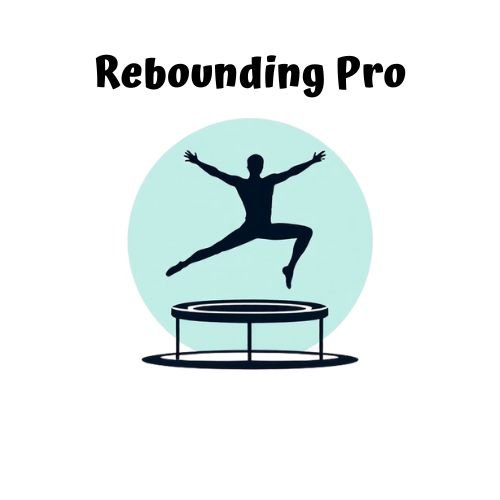
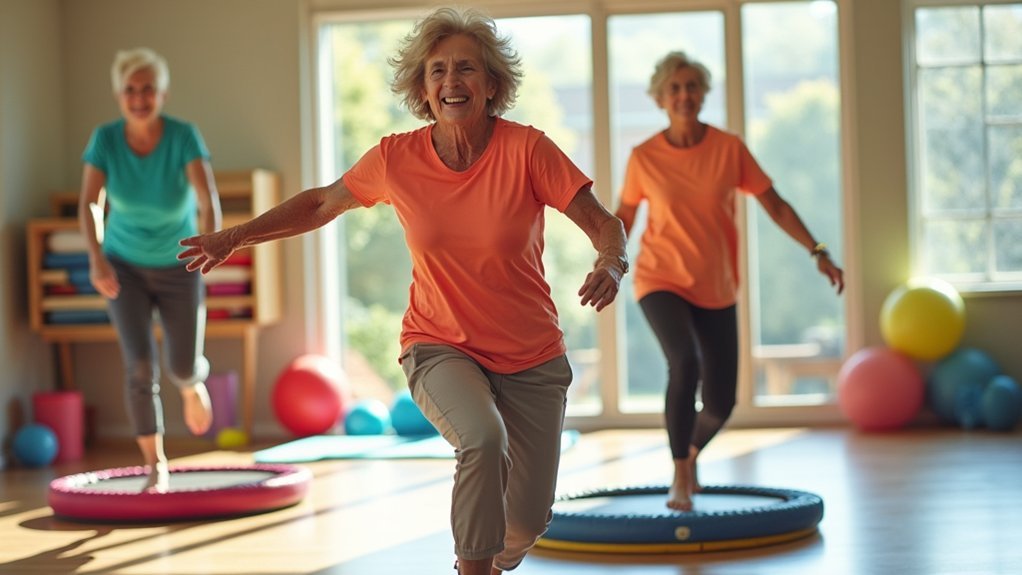


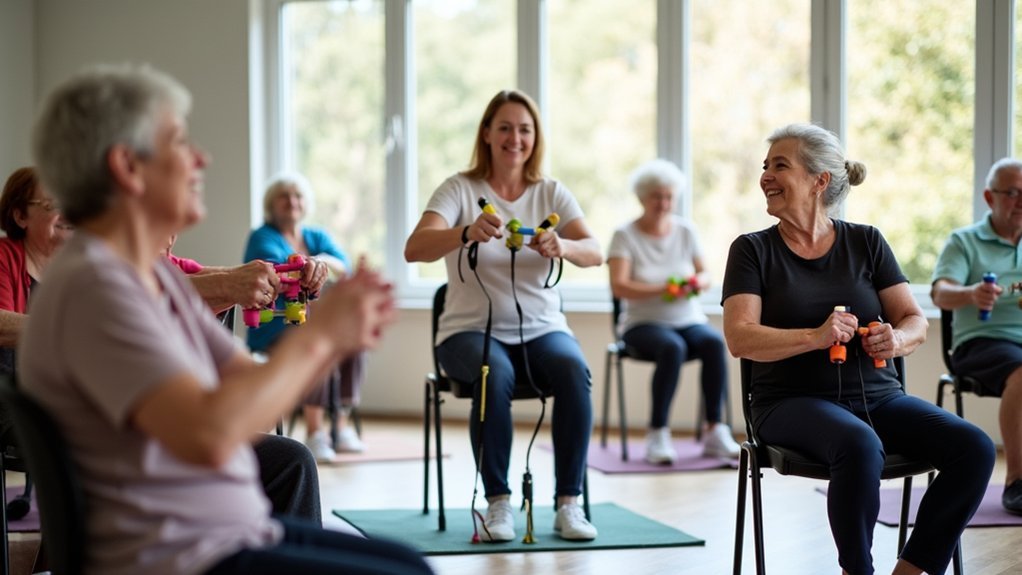
Leave a Reply